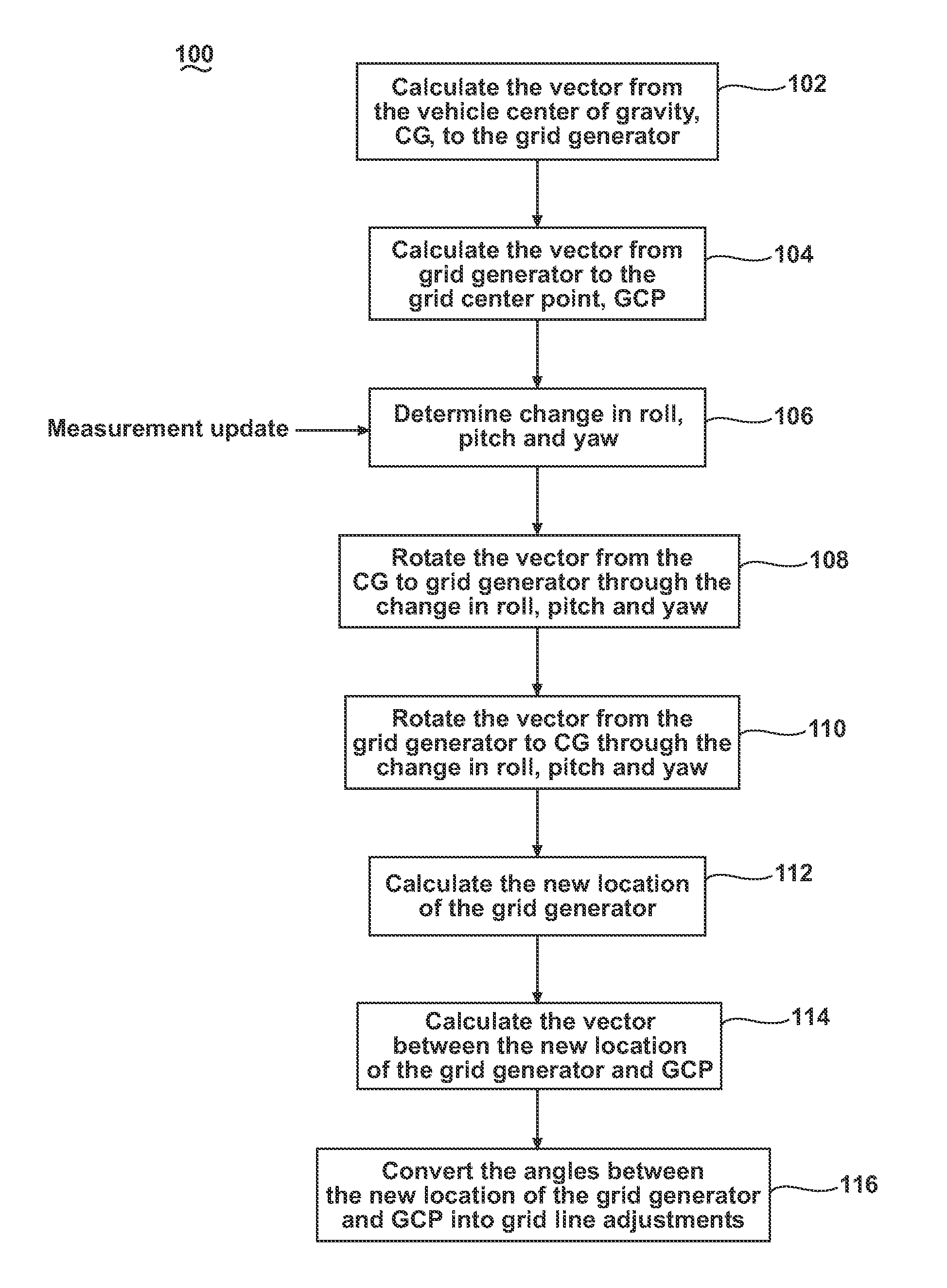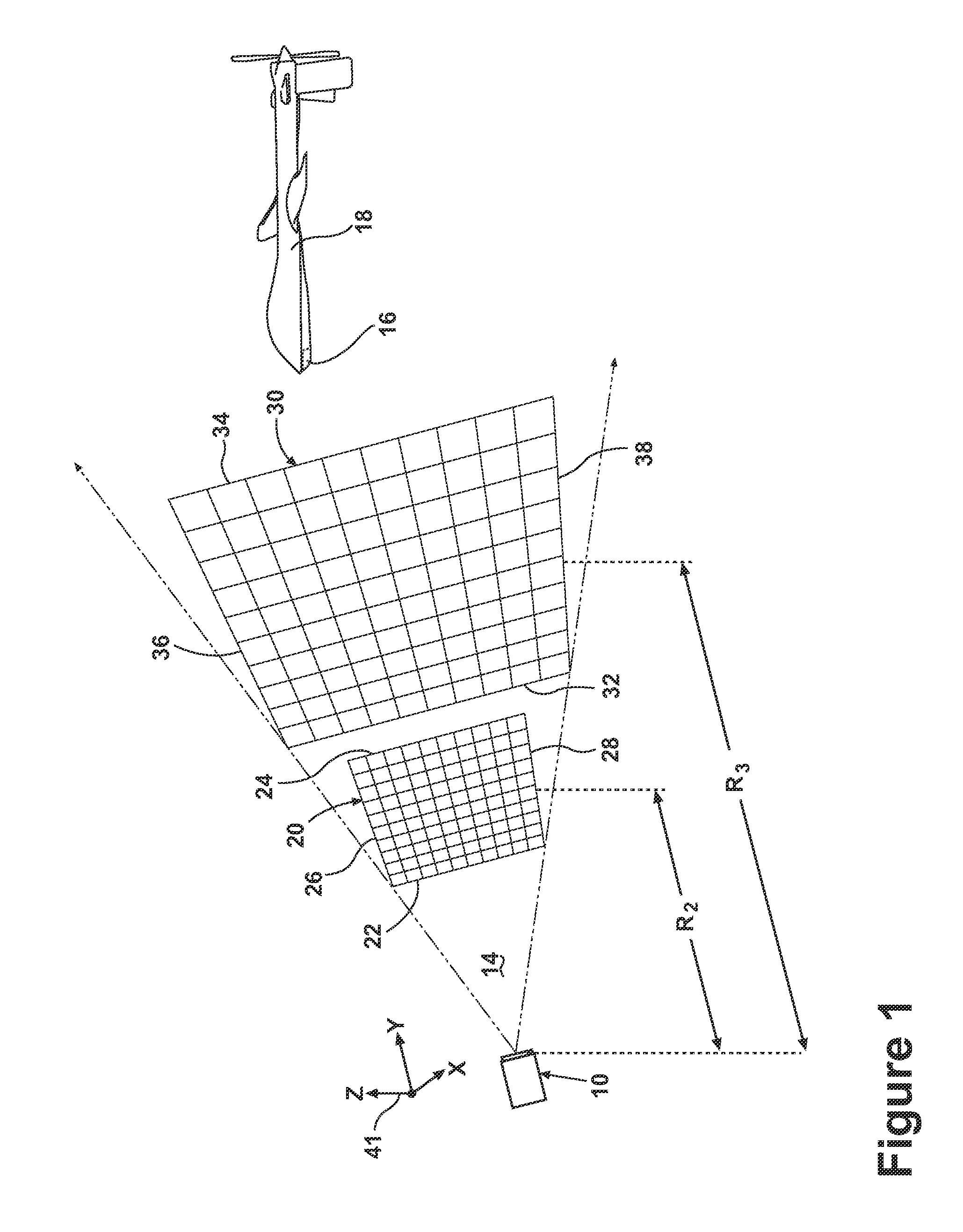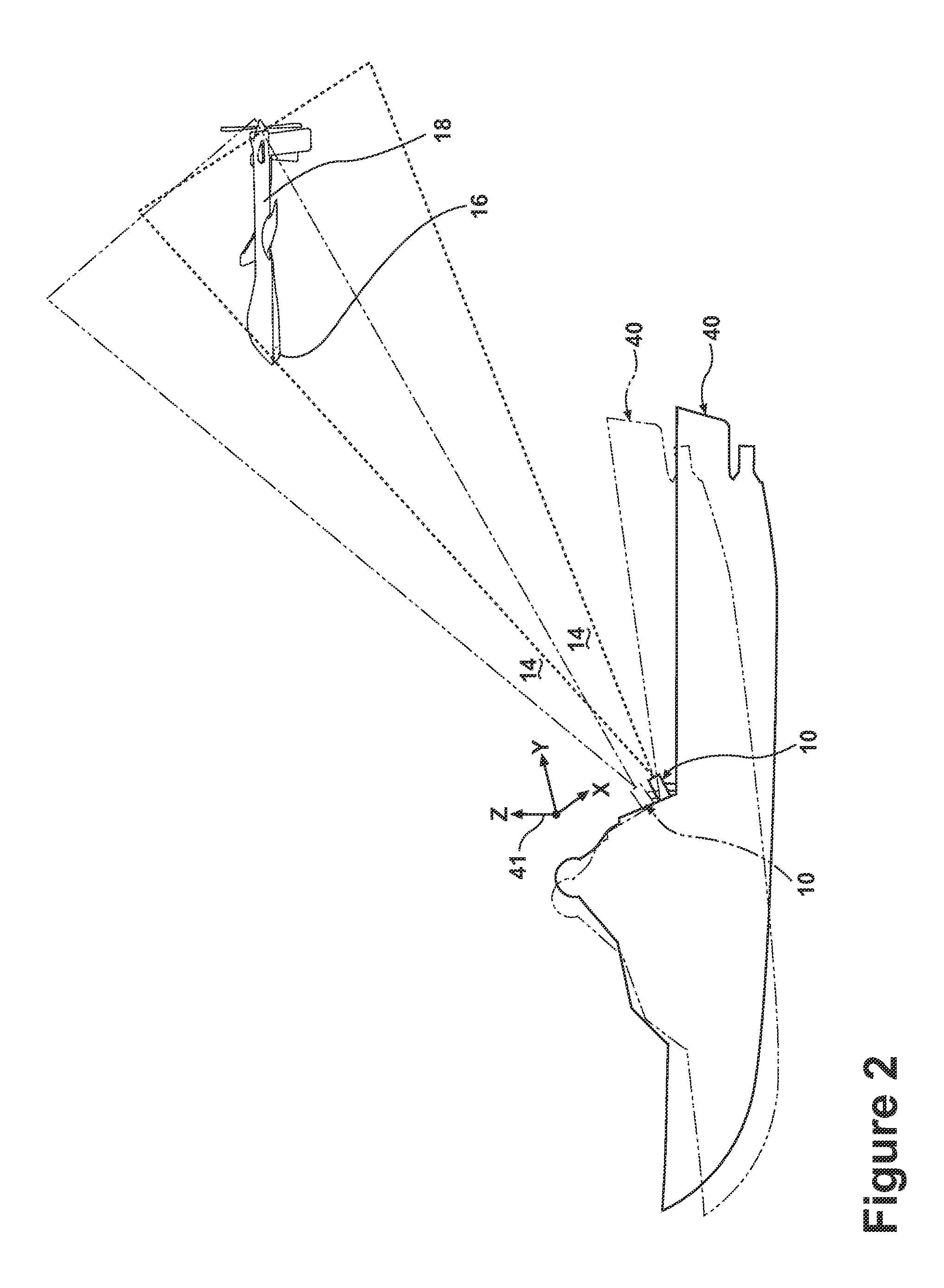Methods for adjusting a relative navigation system
a navigation system and relative technology, applied in the field of methods for adjusting a relative navigation system, can solve the problems of limiting reducing the use of the uav, and reducing the flexibility of the uav, so as to achieve the effect of reducing the number of landing aids
- Summary
- Abstract
- Description
- Claims
- Application Information
AI Technical Summary
Benefits of technology
Problems solved by technology
Method used
Image
Examples
Embodiment Construction
[0012]The embodiments of the present invention are related to methods and apparatus for adjusting a projected grid from a grid generator of a relative navigation system, which may be used for landing any type of aircraft and is particularly well suited for landing UAVs. FIG. 1 illustrates an embodiment of a grid generator 10 may project a grid 12, such as a plurality of intersecting lines, into space within a field of transmission 14. The general details of how to project the grid 12 are known in the art, which include the disclosure in U.S. Pat. No. 7,681,839, issued Mar. 23, 2010, entitled Optical Tracking System For Refueling, and US 2011 / 0153205, published Jun. 23, 2011, entitled Relative Navigation System, both of which are incorporated by reference. Therefore, the general details of the grid generation will not be fully described in this application.
[0013]As illustrated, the projected grid comprises intersecting lines. At some distance away from the grid generator 10, these in...
PUM
 Login to View More
Login to View More Abstract
Description
Claims
Application Information
 Login to View More
Login to View More - R&D
- Intellectual Property
- Life Sciences
- Materials
- Tech Scout
- Unparalleled Data Quality
- Higher Quality Content
- 60% Fewer Hallucinations
Browse by: Latest US Patents, China's latest patents, Technical Efficacy Thesaurus, Application Domain, Technology Topic, Popular Technical Reports.
© 2025 PatSnap. All rights reserved.Legal|Privacy policy|Modern Slavery Act Transparency Statement|Sitemap|About US| Contact US: help@patsnap.com



